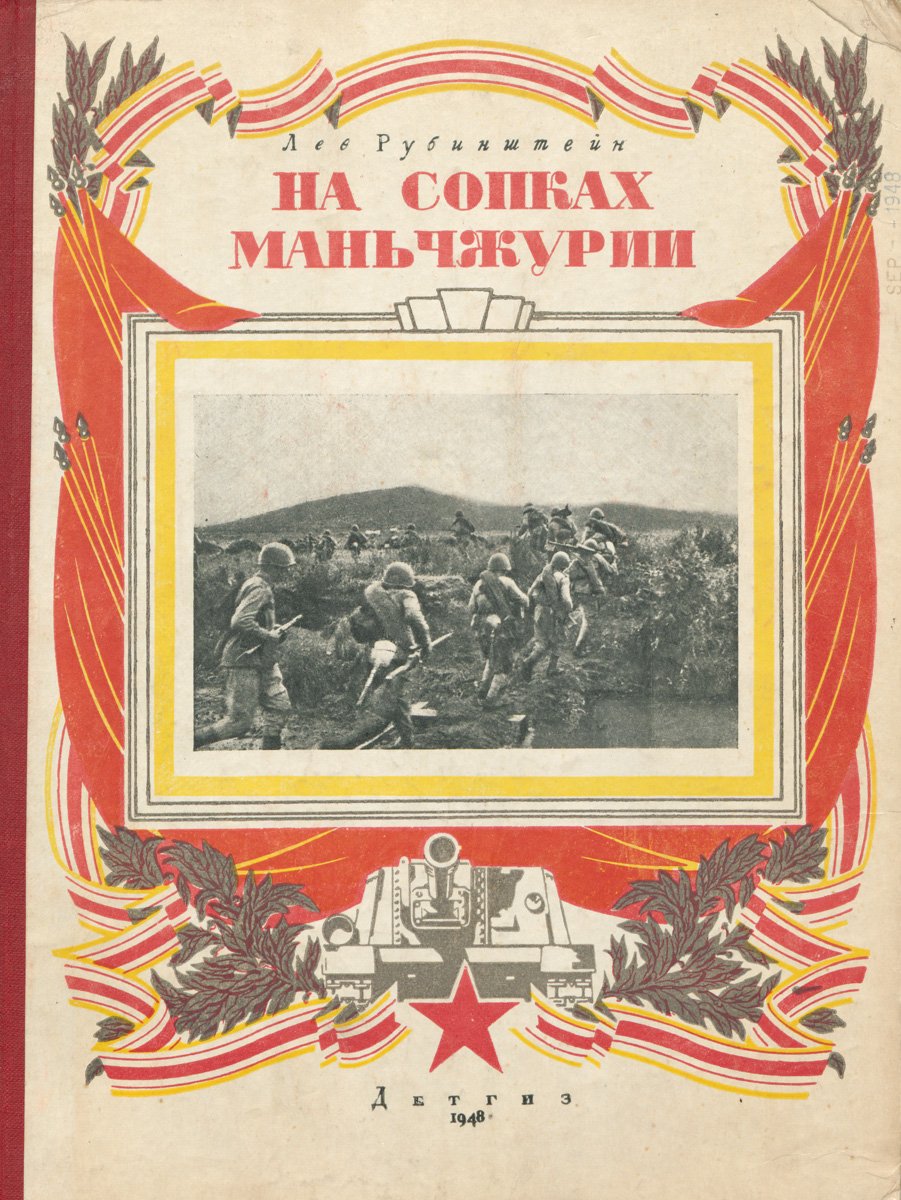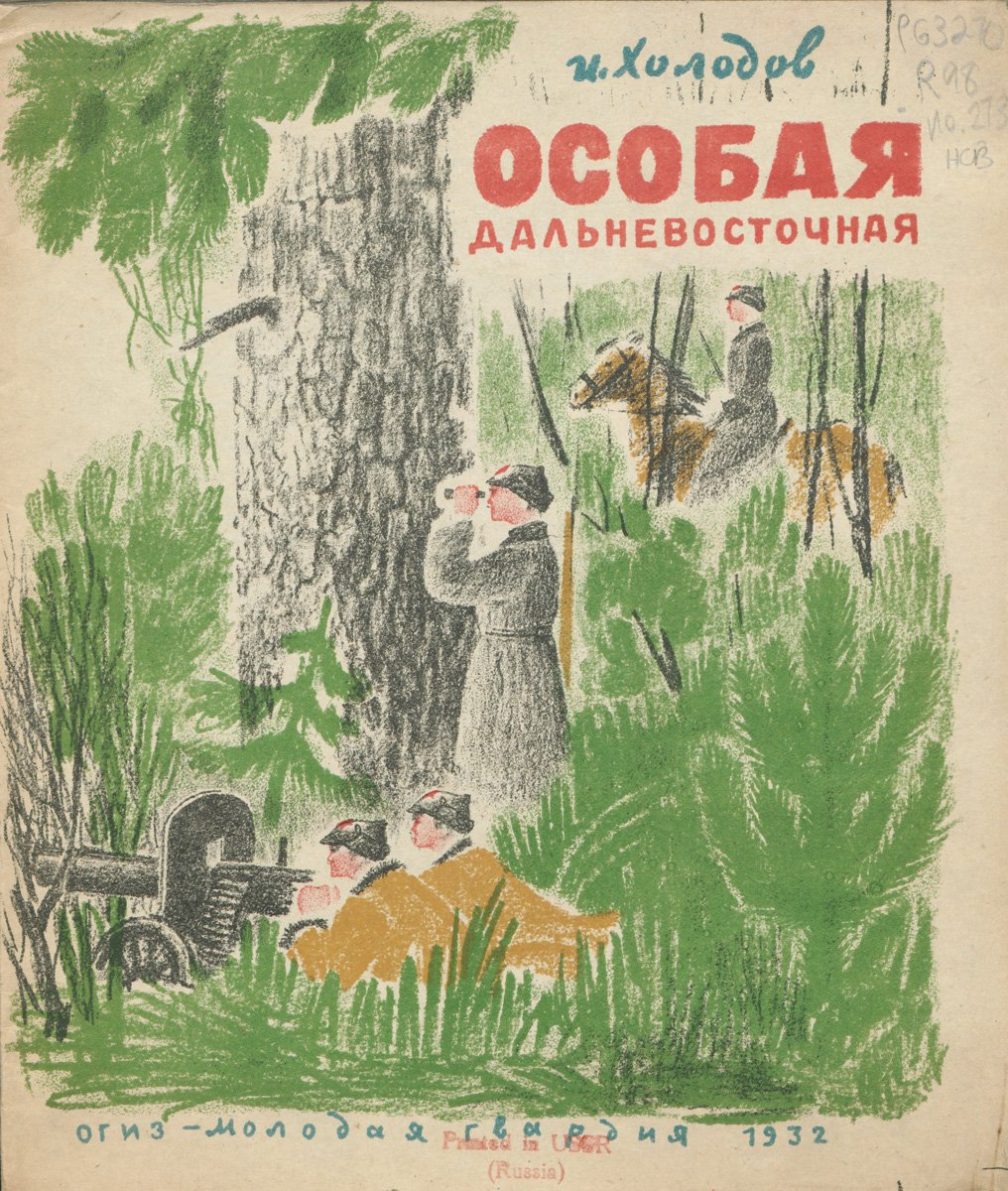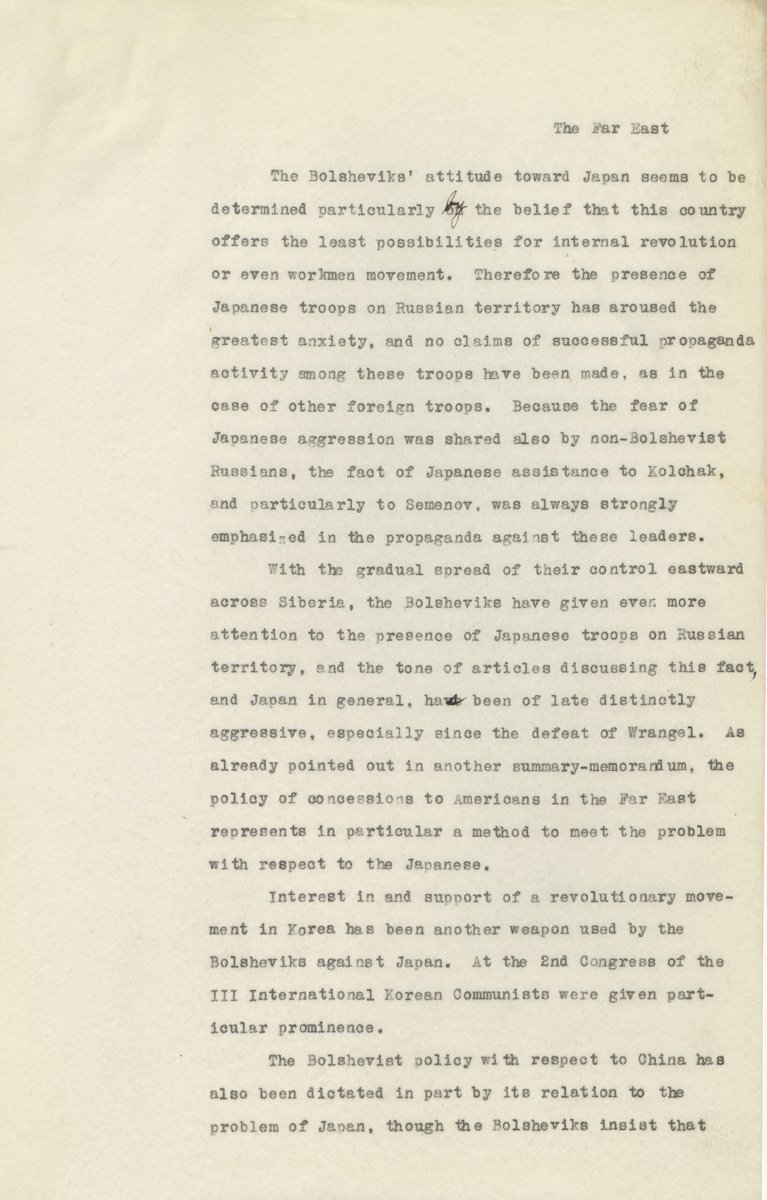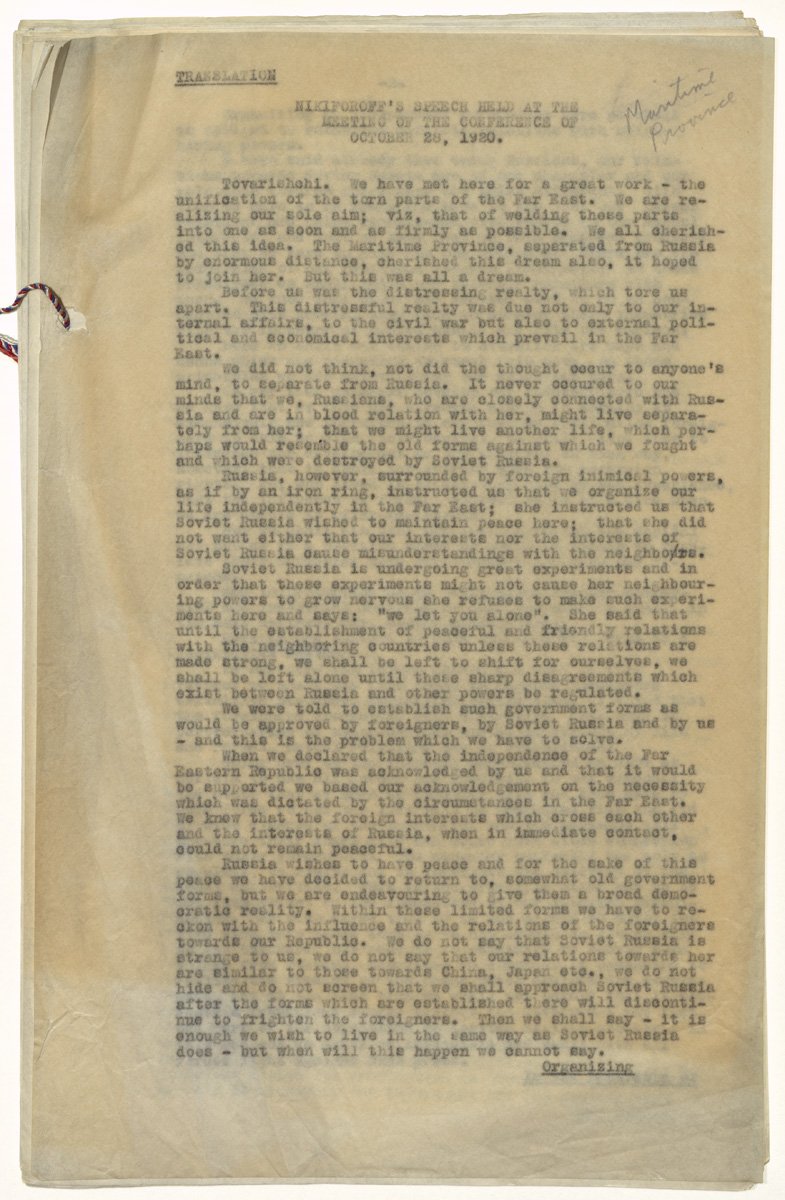Revolutionary Link to the East
Civil
War, Geopolitics and Bolshevik Ideology in Russia’s Eastern Territories
Both Russian revolutions of 1917 took place in St. Petersburg, yet they had serious repercussions for all of Russia’s regions—including Russia’s frontier territories in Siberia and the Far East. The Russian Civil War began immediately following the 1917 Revolution, and, while most major battles in Western Russia were decided in favor of the Bolsheviks by 1919, resistance to the Bolsheviks was especially prolonged in Siberia and the Far East, where skirmishes were still being fought into 1923. Notably, the Russian Civil War in this region was not limited to the participation of the Reds and the Whites as belligerents. In fact, Russia’s eastern territories became a geopolitical epicenter in the struggle to control Russia’s revolutionary future in the wake of the events of 1917.
Assembled here are documents that give a glimpse into the ways in which Russia’s geopolitical situation vis-à-vis its Eastern territories in the years following the 1917 revolutions was portrayed in print media. Of particular interest are: Bolshevik “link to the East” ideology in theory versus in practice, as Bolsheviks in Moscow attempt to reach out to the region’s neighboring Chinese and Korean peasants, even as they fight Japanese imperialists in that same region; Bolshevik creation of the nominally sovereign “Far Eastern Republic” as a buffer zone between the new communist regime in Russia and imperialist regimes in Asia; and Bolshevik portrayals of these events in ideological novels and historical books for Soviet children.

Lev Rubinshteĭn
Moscow: DETGIZ, 1948
Historical Children’s Book Collection
A Soviet book for children, on the Soviet military command in
Manchuria during World War II. Tensions between the Russians and the Japanese,
which had been exacerbated during the Russian Civil War, come to a head during
World War II, when Soviet troops move to drive the Japanese out of China’s
Manchuria region. In this children’s book, the events are portrayed as the
moment when the Soviet forces finally drive the imperialist Japanese out of
revolution-ready China.

I. Kholodov
Leningrad: OGIZ - Molodaiia gvardiia, 1932
Historical Children’s Book Collectio
A children’s book for Soviet children, highlighting the Red Army’s activities in the Far East during the Russian Civil War. The forces of the Special Far Eastern Army are depicted as revolutionaries who are accepted by Chinese peasants as saviors against bourgeois Chinese generals and Japanese imperialists-capitalists. The last page of the book details a Japanese imperialist, capitalist, Manchurian-style plot to put the Whites into power in the Russian Far East, in order to rule the region by proxy. Even after the Whites are defeated by the end of the Russian Civil War, the Special Far Eastern Army is said to be on watch, day and night, to defend against this Japanese plot.

Undated
Samuel N. Harper Papers
Summary and translation of items in Bolshevist newspapers. News media revealed the attitude of Russian revolutionaries toward East Asia, as Bolshevik forces moved into Siberia and the Far East during the fighting in the Civil War. The Bolsheviks were most wary of the Japanese, who had encroached on the Russian Far East before, had come out of the Russo-Japanese War victorious, and had also helped the Whites during the Russian Civil War. Russian print media at the time therefore emphasized Russian ties with Korean and Chinese peasants more than it emphasized any ties between Russia and Japan.

Undated
Samuel N. Harper Papers
Pyotr Nikiforov’s inaugural address on the creation of the semi-autonomous Far Eastern Republic. Compare the language of peace and coexistence here with the rhetoric of anti-imperialist struggle in Pek Dinshun’s speech to the Third World Congress. The creation of the Far Eastern Republic is widely considered to have been a time-biding device that allowed the Bolsheviks to consolidate victories against the Whites in the immediate wake of the Russian Civil War before having to deal directly with encroaching imperialist regimes in East Asia, especially Japan
